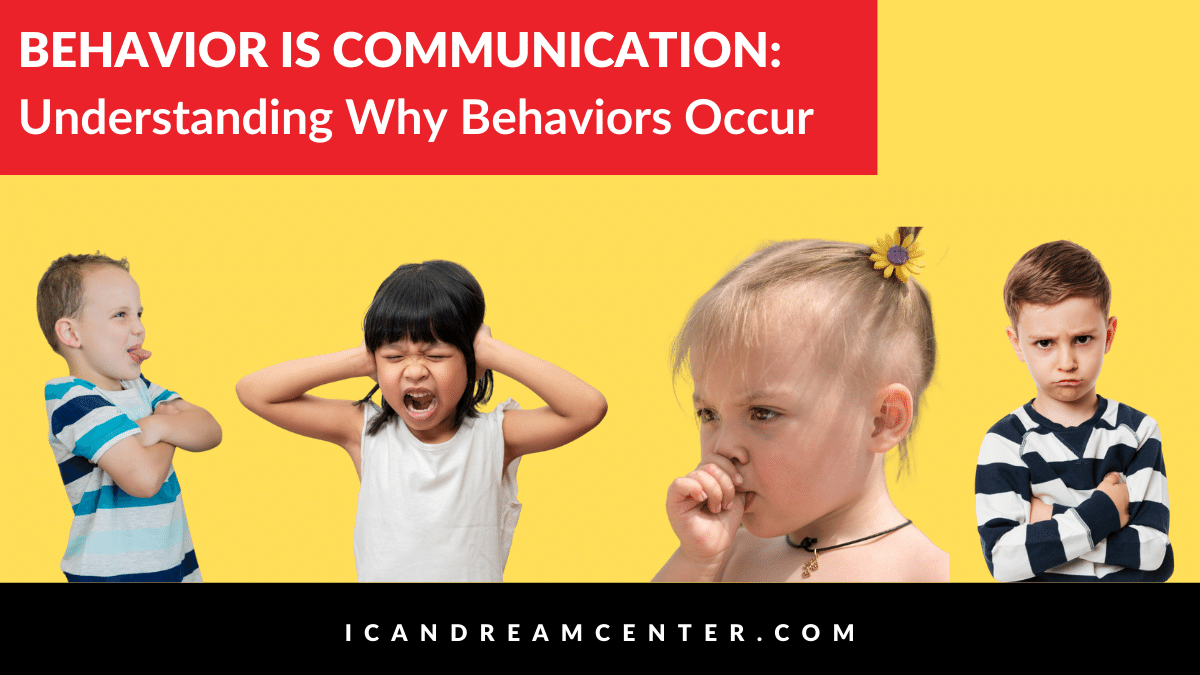
Behavior is Communication: Understanding Why Behaviors Occur
When students engage in challenging behaviors it can be frustrating, confusing, and elicit other unwanted feelings. At times these feelings may interfere with our ability to look at the behaviors with clear eyes and ask: Why is this behavior happening?
To answer this question and understand the behavior, one must consider a few fundamental concepts of behavior. The first is that ALL behavior is communication. For babies, the only way to communicate with a caregiver is through behavior. They may cry to indicate they are wet or hungry; they may smile and giggle to show they like the silly game being played. As babies turn to toddlers, they learn to point to get what they want. In all these examples, we see that the behavior is delivering a message.
This fundamental concept remains true even when our children learn to speak. As Minahan and Rappaport (2013), authors of The Behavior Code, explain “…just because a person is able to communicate in conventional ways such as speaking, writing, or drawing doesn’t mean the person stops communicating through behavior.” The student who pushes his peer at playtime may be communicating she wants to play with that peer; The student who puts his head down during an assignment may be communicating he needs help, or the task is too hard. When we recognize the behavior as an attempt at communication, we can then explore the second fundamental concept of behavior: behavior has a function.
The term function of behavior refers to the reason or the why the behavior is occurring. There are four functions of behavior: to gain attention, to escape or avoid something, to access an item or an activity (aka tangible), and to get some sensory input. Behaviors occur because there is payoff. Understanding the function of the behavior allows you to better respond and influence positive behavior change. For example, a student may be yelling and cursing to communicate ‘I want to avoid this difficult task,’ recognizing this will allow us to adjust our response by teaching the student to appropriately request a break or ask for help.
Attention Function
Behaviors that communicate “I want attention” are seeking a reaction from others. Most individuals engage in some attention-seeking behaviors; however, these behaviors become problematic when the person engages in inappropriate or unsafe behaviors to access attention, demand too much attention, or seek big negative reactions (e.g., the child who pours all their water on the floor to see a big ‘angry reaction’ from their caregiver). When we recognize that the student is engaging in problem behavior to seek attention, we can adjust our response. We can give the BIG reactions to the positive, desired behavior we want to see more of and keep our responses very calm and neutral when correcting problem behavior.
Escape Function
It’s natural for humans to want to escape or avoid unpleasant situations (such as difficult tasks, social situations, unpleasant smells, and loud noises). Escape-motivated behaviors seek to remove an undesired situation or person. These behaviors become problematic when they interfere with developing skills, daily living, or the behaviors demonstrated are unsafe. Escape-motivated behaviors can be addressed by teaching the student to request a break or ask for help when undesired situations occur.
Tangible Function
Tangibly motivated behaviors provide access to highly preferred items or activities. We have all seen or experienced a child screaming, crying, and maybe even falling to the floor when they were told “no” to some toy or treat. In the same way, many adults would stop working if they did not receive a paycheck. Minahan and Rapport (2013) explain that “students who demonstrate inappropriate or unsafe behaviors to get a tangible item often have difficulty with delayed gratification; they want the item now.” When we respond to tangibly motivated behaviors, we must teach the student to ask for, wait, and/or complete a desired task before giving them access to the item/activity.
Sensory Function
Sensory-motivated behaviors seek input related to the 5 senses. A student may rock back and forth to self-soothe, suck on their thumb, bite to seek oral input, or twirl their hair repeatedly. Sensory-motivated behaviors may also include harsh body movement such as slamming, bumping into things, or spinning as these also provide sensory input to the body. When responding to inappropriate sensory seeking behaviors, it is important to find an appropriate behavior that provides the same sensation. For example, when a child bites or puts unsafe items in their mouth, you might replace that with a chew tube, gum, or offering an item to eat.
References
Minahan, J., & Rappaport, N. (2013). The behavior code: A practical guide to understanding and teaching the most challenging students. Harvard Education Press.
